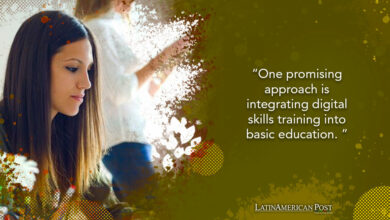Sexual and Reproductive Education: A Must for Schools
Currently, different schools across the continent offer sex education classes. However, these programs are based on religious, moralist, and conservative biases, ultimately offering abstinence as a contraceptive method.

The Woman Post | Lina Daniela Cardona Aguilar
Escucha este artículo
According to the United Nations Popular Fond (UNFPA), it is estimated that 18% of births in Latin America and the Caribbean come from women under 20 years of age. This alarming figure raises questions regarding the state's responsibility and governance agendas regarding sexual and reproductive education programs provided to adolescents in educational spaces such as schools, colleges, and universities.
Likewise, the Pan American Health Organization (PAHO) and the World Health Organization (WHO) established that by 2019 only 28% of adolescents between 15 and 19 years of age in Latin America and the Caribbean used contraceptive methods. In addition, it is estimated that more than one million adolescent women in these age ranges have an unmet need for modern contraceptives. However, this raises questions about health systems and why there is no implementation in public health and education policies to create developed countries that meet sexual and reproductive needs.
In this sense, it is crucial to highlight the importance of policies and programs for preventing adolescent pregnancy. In turn, these should be a priority in national health and development agendas. Consequently, education in schools and universities should include sex education programs based on pedagogy and free thinking. Currently, different schools across the continent offer sex education classes. However, these programs are based on religious, moralist, and conservative biases, ultimately offering abstinence as a contraceptive method. Likewise, these schedules are just optional to be taught by these institutions because there is no mandatory rule coming from the states -not even in public schools-.
Considering the aforementioned, abstinence is not a "contraceptive method," but an individual's decision on how to live their sexuality. Therefore, the teaching of schools based on this decision to prevent pregnancy is inadequate, inefficient, and generates distrust in adolescents. Sex education classes, in addition to teaching about the optimal conditions for having sex (hygiene, health, consent, and live free of violence), should also inform about pregnancy prevention through initiatives that explain and address the existence of contraceptive methods. According to the do my paper service researchers, sex education classes, in addition to teaching about the optimal conditions for having sex (hygiene, health, consent, and live free of violence), should also inform about pregnancy prevention through initiatives that explain and address the existence of contraceptive methods.
Also read: SPAIN AIMS TO PROTECT REPRODUCTIVE HEALTH RIGHTS
Teaching about contraceptive methods should also cover explaining the different kinds of methods that exist, their effects on women's hormones, and that it is a couple's shared responsibility. Likewise, it should also identify and indicate where condoms, for example, can be accessed free of charge or what processes should be carried out in public health services to access family planning consultations at low prices or free of charge. The latter, with particular emphasis on the socioeconomic and cultural differences in Latin American and Caribbean countries, which create barriers to access to quality health and education.
Finally, comprehensive sexual education is a responsibility of the states, schools, and universities that allow the free development of the personality and a healthy sexual and reproductive life. This should be accessible to the entire population and be financed by the state, which should include these policies in its agenda for the optimal development of society.




